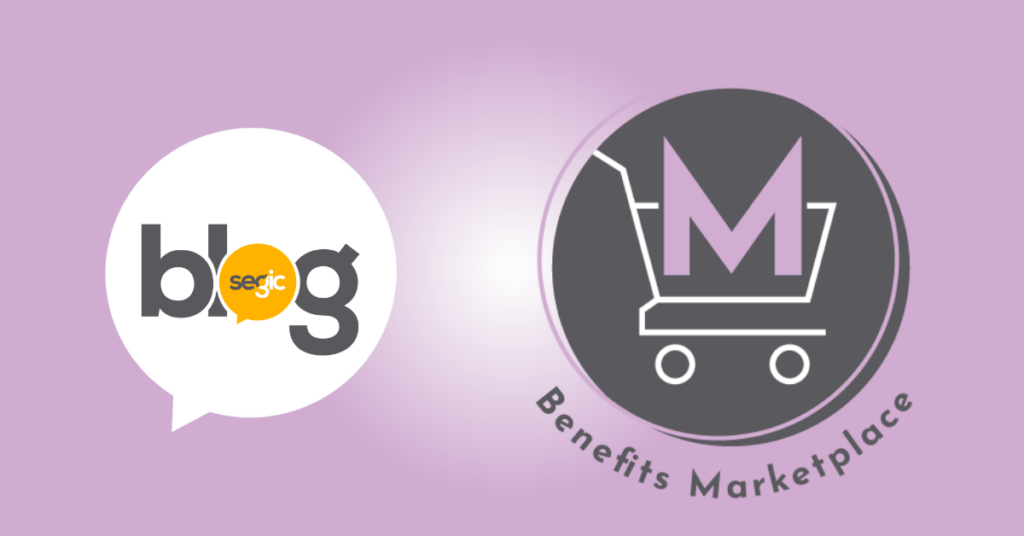Introduction
For the past eight years, Segic has developed an innovative platform for managing group benefits programs, making life easier for brokers and employees in the workplace. In 2023, Segic is taking a new step by launching a Benefits Marketplace, providing intermediaries with the opportunity to offer both group and individual benefits. At Segic, we believe that the ideal time to offer employees optional and individual services is during their enrollment in their group plan. This approach enables individual and property & casualty insurance brokers (P&C Broker) to engage in cross-selling within their group, creating a rewarding and profitable experience for all stakeholders.
In this blog, we will support our claims with statistics on employee purchasing habits. It is crucial to understand why an employee’s self-enrollment is the best time to offer optional and individual benefits.
Additionally, we will explore why the best time to sell to employees is when they are already engaged in the selection process, as well as how to integrate these concepts into your sales strategy.
Why is the selection process the best time to sell?
1. Relevance
When employees are already engaged in the selection process, they are more likely to consider additional options as relevant to their needs. They have already identified a need and are actively seeking to fulfill it. By offering additional benefits at this stage, you can maximize their interest in complementary products and services.
2. Engagement
Employees engaged in the selection process are more invested in their purchasing decision. They have already decided to devote quality time to enrolling in the benefits program, making them more likely to make a decision and buy. The exposure effect (Zajonc, 1968) suggests that the more employees are exposed to a product or idea, the more likely they are to like it and be interested in purchasing it. By offering optional and individual benefits during the selection process, you increase employees’ exposure to these options.
3. Personalization
By offering individual benefits at the time of group benefits selection, you can provide a personalized experience for your clients. This can increase customer satisfaction and the likelihood that they will purchase additional products. A Forrester Research study (2012) found that 77% of employees are more likely to choose, recommend, or pay more for a brand that provides a personalized experience.
4. Leveraging emotions
Employees are often more receptive to offers when they are emotionally engaged in a process. By offering additional benefits while they are selecting their group benefits, you can leverage their emotional state to encourage additional purchases. The concept of progressive commitment is based on the theory of cognitive dissonance (Festinger, 1957), which states that individuals seek to reduce inconsistencies between their attitudes and behaviours.
How to integrate these concepts into your sales strategy
1. Find the right balance
It is important not to overwhelm employees with too many options and information. Present additional benefits in a clear and concise manner, highlighting their value and explaining how they complement the selected group benefits. Moreover, be sure to provide enough information to help employees make an informed decision without overwhelming them.
2. Use personalization techniques
Tailor your offers based on each client’s individual needs and preferences. Use available customer data, such as their purchase history and stated preferences, to personalize recommendations for voluntary and individual benefits. By offering a personalized experience, you increase the likelihood that employees will purchase additional products.
3. Create a smooth customer journey
Ensure that the process of selecting and purchasing benefits is simple and intuitive. Minimize potential frictions and obstacles that may discourage employees from adding additional benefits to their cart. Customers appreciate hassle-free experiences and are more likely to make additional purchases if they find the process easy and enjoyable.
4. Communicate effectively
Use appropriate communication channels to inform employees of the additional benefits available. Whether it’s by email, phone, live chat, or in-person, make sure to provide clear and relevant information that highlights the value of the additional benefits. The quality of communication can have a significant impact on a consumer’s purchasing decision.
Conclusion
The best time to sell additional benefits to employees is when they are already engaged in the selection process. By leveraging the relevance, engagement, personalization and emotions of employees, you can maximize your sales and offer a high-quality customer experience. To that end, it is crucial to find a balance, use personalization techniques, create a smooth customer journey, and communicate effectively with clients. By implementing these strategies, you will be able to take advantage of the optimal time to sell additional benefits and increase customer satisfaction and loyalty.


